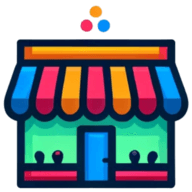7 Tech Tools that Transformed Small Business Operations
In today's fast-paced business world, technology tools are revolutionizing how small businesses operate. This article explores seven game-changing tech solutions that have transformed various aspects of small business operations, from customer relationship management to inventory control. Drawing on insights from industry experts, discover how these innovative tools are helping small businesses streamline their processes, boost efficiency, and stay competitive in the digital age.
- CRM Revolutionizes Small Business Operations
- Ticketing System Streamlines Workflow Management
- Barcode Inventory Transforms Business Control
- Scheduling Software Elevates Gardening Service
- AI Personalizes Education and Streamlines Administration
- Slack Centralizes Communication for Remote Teams
- Online Booking Enhances Rental Business Efficiency
CRM Revolutionizes Small Business Operations
One piece of technology that transformed how we operate at Tech Advisors is our Customer Relationship Management (CRM) tool. Before implementing it, our sales and support staff relied heavily on spreadsheets and memory to track conversations and follow-ups. That led to missed opportunities and inconsistent customer experiences. I remember a turning point years ago when Elmo Taddeo and I reviewed a missed client renewal. That one slip-up pushed us to centralize and automate our customer tracking.
The CRM didn't just solve a communication gap—it gave us insights. We started seeing which emails clients were opening and how they were interacting with our site. It became easier to respond at the right moment with the right message. Sales became more efficient. Our team knew who to call, when to follow up, and what issues had already been addressed. It also helped with onboarding new staff. Instead of shadowing a dozen calls, they could review customer histories in minutes.
For small businesses considering a CRM, I recommend starting simple. Focus on what matters—client records, task reminders, and visibility across the team. Choose a platform that integrates easily with your current tools. It doesn't have to be perfect on day one. What matters most is getting everyone comfortable with it. Once that happens, the improvements are noticeable—less chaos, more accountability, and better client relationships.
Ticketing System Streamlines Workflow Management
One technology that significantly improved our operations at DualEntry is implementing a ticketing system—specifically Linear, which has a generous free tier. This transformed how we manage our workflow by ensuring every task or issue is clearly assigned, escalated if needed, and fully trackable. Each ticket includes detailed history: when it was created, escalated, and any explanations for delays, giving us transparency and accountability. Compared to complex task management platforms, we find ticketing systems simpler to manage yet still customizable to our needs. Now, with advancements in AI, we leverage integrations through tools like Zapier or n8n (open source) to automatically assign tickets to agents, monitor progress, and track outcomes more efficiently. This has streamlined operations, enhanced team productivity, and improved our overall responsiveness.

Barcode Inventory Transforms Business Control
Switching to a barcode-based inventory system felt like stepping out of the dark ages. Before this upgrade, I relied on memory and scribbled notes taped to shelves, which meant every stocktake was a guessing game.
I still remember one winter morning, standing in a chilly storeroom, realizing I'd over-ordered packaging by a factor of three. That mistake sat in the corner for months, a silent reminder of how much guesswork cost me.
The first week after installing barcode scanners, I noticed a shift in the team's energy. Instead of debating what was in stock, we scanned items in and out, and the numbers matched up at the end of the day.
It wasn't just about speed; it was about trust in the process. I could trace every ingredient's journey from delivery to finished product, which made troubleshooting so much easier when something went wrong.
This system made me rethink how I approached growth. With the data at my fingertips, I could finally plan for the future instead of reacting to surprises. That sense of control changed everything.
Scheduling Software Elevates Gardening Service
One piece of technology that has significantly improved how I run Ozzie Mowing & Gardening is my scheduling and client management software. When you're managing dozens of clients every week across different suburbs, it's easy for things to fall through the cracks if you're relying on pen and paper or even basic spreadsheets. After years of hands-on experience and knowing exactly how long each type of job takes, I was able to set up a system that accurately schedules our team's day down to the hour. It also tracks recurring services, automates follow-ups, and keeps detailed notes on each client's preferences and garden requirements. This has drastically reduced downtime, improved communication with clients, and made it easy to provide a consistent and reliable service every time.
My horticulture qualifications and practical knowledge were key in making this work. I knew what needed to be recorded for proper plant care throughout the year and I could customize the system to suit the realities of gardening work. For example, knowing the exact pruning times for different species means we can schedule maintenance at the right time, not just when it's convenient. That sort of detail creates better results for the garden and happier clients. The software didn't just make us faster; it helped lift the overall quality of service.
AI Personalizes Education and Streamlines Administration
One piece of technology that has dramatically transformed how we run Legacy Online School is AI — and not in the hyped-up, buzzword way. For us, AI has become a quiet but powerful co-pilot across multiple areas of the business.
A specific example? We use AI to support personalized learning pathways. Instead of forcing every student through the same content at the same pace, AI helps us identify gaps, suggest tailored resources, and flag when a student might need human support. That blend of automation and human care has completely changed how we scale quality education without sacrificing its soul.
On the operations side, AI has also taken over repetitive administrative tasks and general inquiries — things like scheduling, basic information requests, and sorting internal tickets. It's not replacing people — it's freeing them to focus on what only humans can do: teach, care, and inspire.
For any small business: AI isn't the future. It's a present that you can shape intentionally.

Slack Centralizes Communication for Remote Teams
One piece of technology that has significantly improved the way I run my small business is Slack. While it might seem simple on the surface, its impact on our daily operations has been profound—especially as we've grown and adopted more remote and hybrid workflows.
Before Slack, communication was scattered across endless email threads, delayed responses, and missed updates. Now, everything from project discussions and quick decisions to file sharing and team check-ins happens in one centralized place. We've set up dedicated channels for each function—marketing, content, product, support—and even integrated tools like Google Drive, Trello, and Zoom, so work flows seamlessly without switching tabs all day.
What makes it truly game-changing is the transparency and speed it brings. Team members can get context instantly, collaborate in real-time, and keep momentum without waiting on lengthy meetings or approval chains. It has improved our productivity, reduced miscommunication, and made our team feel more connected—no matter where they're working from.
Slack isn't just a messaging app—it has become the nervous system of our business, keeping everything and everyone aligned.
Online Booking Enhances Rental Business Efficiency
Online booking software changed how we operate.
Before we used it, managing schedules took too much time. Calls and emails dragged out the process. Mistakes happened. Clients waited longer than they should have. The entire system felt slow. Since making the switch, bookings have moved faster. People see what's available and confirm their rentals without delays. The software updates our calendar, tracks inventory, and keeps everything organized.
The impact showed up quickly. We experienced fewer errors, more time, and better planning. We saw patterns in demand and adjusted our strategy accordingly. When one category of rentals picked up, we focused our efforts there and saw results. The data helped guide decisions without guessing. It gave us a clear view of what was working and what wasn't.
One tool didn't fix everything, but it fixed one big issue. That was enough to improve the rest. When operations run more smoothly, service improves, and growth follows. Streamlining the process gave us more control, more efficiency, and better outcomes.






